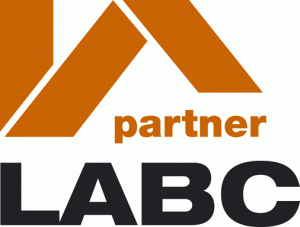 The 'top 10 tips' for a successful build of your home extension during the build
process on site with your builder - A clients guide to building a home extension. The 'top 10 tips' for a successful build of your home extension during the build
process on site with your builder - A clients guide to building a home extension.

PROJECT STAGE:- TENDERS RETURNED - BUILDER SELECTED
This guide assumes that you have utilised my services for all the design stages and the advise is based upon
using my documents supplied.
This guide assumes that CHP will not be engaged for the ‘Contract Administration’.
TOP TIP NO. 1 - YOU HAVE RESEARCHED YOUR PREFERRED BUILDER - This
means that you have visited one or two of his recent completed projects and spoken to the homeowners directly.
You have also telephoned one or two other homeowners of recent work completed by this builder for an overall
picture of his quality and reliability.
TOP TIP NO. 2 - YOU HAVE ENTERED INTO A WRITTEN AGREEMENT -
Either by letters or by using a standard form of building contract. Each party signing one set of the drawings
& specifications is also useful as a point of reference should there be changes or revisions along the way.
TOP TIP NO. 3 - YOU HAVE AN AGREED START AND TARGET FINISH DATE
- This is the contract period and it is useful if the builder has prepared for you an illustrative
schedule of the relevant work stages areas for monitoring, advance warning and planning of each work stage.
Agreement of working hours and access arrangements is also required.
TOP TIP NO. 4 - YOU HAVE PREPARED AND CLEARED THE AREA OF THE NEW
BUILDING WORKS - It is unreasonable for the builder to relocate your personal effects that are within the
building area so move that Wendy house, trampoline, bar-b-que etc. to somewhere safe yourself to avoid extra costs,
delays and breakages.
TOP TIP NO. 5 - YOU HAVE IDENTIFIED & AGREED A DEFINED AREA ON THE
SITE FOR MATERIAL STORAGE - Let the builder know if there are any ‘no go’ areas such as a protected tree
or important wisteria plant for example. For added clarity mark up a plan and agree the areas for storage
with any 'keep off’ zones during the works.
TOP TIP NO. 6 - YOU HAVE DISCUSSED AND AGREED OTHER RELEVANT WORK
ELEMENTS - This includes for locating the workers wc, where to take temporary power and water for the
works, working hours, access to site etc.
TOP TIP NO. 7 - YOU HAVE AGREED AREAS FOR SEALING OFF AND LIMITING
ACCESS - If you are still living in the property when the works are taking place, the work areas need
sealing off for protection and security.
TOP TIP NO. 8 - MEET AND SPEAK WITH YOUR BUILDER REGULARLY -
Pre-empt situations and keep up to date with progress including understanding the builders issues that will arise
from time to time. Do not be tempted to micro-manage everything as this will frustrate the builder. Let the builder
know of your own work / life commitments in case he needs to keep the noise down one day when your grandmother
comes to visit for example. Advance communication is key.
TOP TIP NO. 9 - BE FLEXIBLE AND PRAGMATIC - Changes to the
design or works will inevitably arise during the build to suit opened up on site circumstances. Your builder should
be advising you of these issues before they happen. This way you can assess their relevancy and discuss all the
options available. If in doubt contact CHP and discuss.
TOP TIP NO. 10 - HAVE YOUR FUNDING READY - Delayed payments to
builders will cause mistrust and disrupt the build process.
I hope this short resume of the building period is of use to you and has answered your questions that you may
have had. It may not be fully conclusive in content and is merely a 'memory jogger' of some items applicable.
If it does not answer all of your questions, please do telephone my office and I will try to assist further.
| 

 The 'top 10 tips' for a successful build of your home extension during the build
process on site with your builder - A clients guide to building a home extension.
The 'top 10 tips' for a successful build of your home extension during the build
process on site with your builder - A clients guide to building a home extension.






